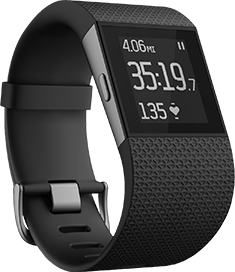I began using a wearable fitness device called Fitbit in January 2010, the month after it came out and my first month of retirement.
Even with all of the hype today about wearables such as this, they are still used by only 1-in-10 Americans. Half of Americans are aware of wearable devices of various types, not just for fitness.
I come from several generations of gadget people but was surprised that only a little more than a third of those who are early adopters of technology were aware of wearable fitness trackers today.
About 28% of Americans say they are likely to buy a wearable fitness device with half of those hoping to count calories and a third tracking the number of steps taken in a day.
Research shows that nearly 48% of Americans want to lose weight and have made that a goal for this year. That plays nicely playing into the hands of users of devices such as Fitbit, because 47% walk long distances for health.
Unfortunately, 47% of weight loss seekers also enjoy baking cakes, pies, breads or desserts on a regular basis according to AudienceScan. I wonder if this correlates to the 49% on a Pew survey two years ago who responded that they “keep track in their head.”
How’s that workin’ for ya?
I put that first Fitbit through the washing machine and waited a month or two to replace it so I don’t have a true running total of all of my activity tracked so far, but I’ve got it for the six years from April 2010 to now.
So far, I’ve walked about 2,900 miles or the distance between where we live in Durham, North Carolina and where my youngest sister and brother-in-law live in Mill Creek, Washington and then back up to the pass back through the Cascade Mountains.
But I only started walking religiously each morning a little more than a year and a half ago.
Every week now, on average, I walk a distance equivalent to walking from Witherspoon Rose Culture near the southwestern Durham County line near Chapel Hill to the northwestern Durham County line near Timberlake. That’s about 25 miles on foot.
I’m typically an Apple guy when it comes to devices but after comparing the two, I upgraded to the Fitbit Surge for now instead of moving to the Apple Watch due out soon.
It includes some features the Apple Watch won’t have when it comes out next month at and it already pairs with my scale.
In part, it is also because I don’t like the fact that rather than innovating new products, Apple seems prone to either buy them up or run over businesses such as the entrepreneurs who founded Fitbit, which featuring about 40 partners has grown to provide about 70% of fitness wearables in use.
Eventually, once the bugs are worked out and it is clear I won’t lose any Fitbit compatibility, I suspect I might make the switch to the Apple Watch, but that remains to be seen.
Prior to when these fitness versions of a smartwatch came out, they had only 2% penetration with consumers. Wearable fitness devices in general skew toward those between the age of 35 and 54, about half women.
Smartwatches on the other hand have skewed younger than that and predominately male. I suspect Fitness Surge and Apple Watch are changing this profiles.
The Surge uniquely incorporates an “okay” GPS to map the routes you have taken but different than other Fitbits, it is better at tracking various exercises such as biking and weight training as well as yard work that may involve more exertion than walking.
It also does a great job of measuring heart rate and breaking it down into peak, cardio and fat burn zones.
If weight loss is a goal, as initially it was for me before dropping 30 lbs. to bring my Triglycerides back in line, take note of research showing that 60% of users for that reason lose more weight when pairing a fitness tracker with a weight loss app such as MyFitnessPal compared with when they didn’t use a tracker.
I wasn’t heavy per se but not in the best shape and my Tri’s were sky high. They are formed by three fatty acids bound by a molecule of glycerol inside a fat cell and too large to flow through the membranes of the cell.
Typically, fat flows in and out of our cells constantly, but its fat that is stored like this that causes problems, even when we appear otherwise to be okay.
I’ve struggled to enjoy exercise during my life when it didn’t involve team sports or tennis but these devices and apps not only make it interesting but they make you aware of unproductive habits so you can break them.
No, nobody paid me to write this. In fact, no one pays me to write any of these posts. I’m just a fan of wearable fitness devices and related apps because they have made a big difference in my overall health.
Now if I could just find something to make traveling lunges seem fun!
No comments:
Post a Comment